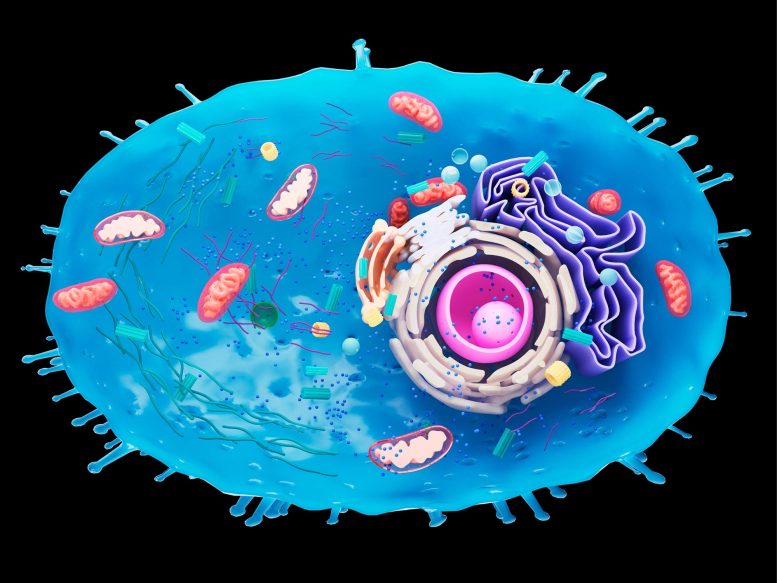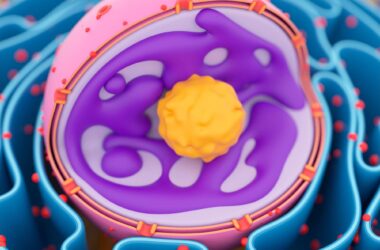
Illustration d’une coupe transversale d’une cellule humaine.
Des chercheurs de l’Université de Houston reçoivent une subvention de 1,2 million de dollars pour étudier les ribosomes.
Deux chercheurs de l’Université de Houston développent un type de spectroscopie pour aider à comprendre comment les ribosomes fabriquent les protéines au cœur des cellules, dont la découverte pourrait potentiellement guider la conception de médicaments pour traiter les cancers et les infections virales. La spectroscopie mesure l’interaction entre la lumière et la matière pour déterminer les caractéristiques et le volume de la matière cellulaire.
En biologie cellulaire, les ribosomes sont des chevaux de trait, de véritables usines à l’intérieur des cellules, dont le travail consiste à fabriquer des protéines. Les instructions qui indiquent au ribosome comment travailler proviennent du messager RNA, which contains codes on making proteins, actually called codons. One mistake in defining an upstream codon will be propagated to the rest of the messenger like the domino effect, which spells disaster to the cell.
During protein assembly, the ribosome must be precise in moving from one codon to the next, a process known as translocation. On the other hand, many viruses contain genomic sequences that are designed to slip on certain codons to re-define the protein composition after that codon, in a process called frameshifting.

Yuhong Wang, professor of biology and biochemistry and Shoujun Xu, professor of chemistry, are developing a new imaging technique with super-resolution to peer into ribosomes. Credit: UH
“We are developing a multiplexed super-resolution force spectroscopy to investigate high-fidelity and frameshifting translocations,” said Yuhong Wang, professor of biology and biochemistry. Wang and Shoujun Xu, professor of chemistry, received a $1.2 million grant from the National Institute of General Medical Sciences to support their research.
“We will measure the power strokes from elongation factors (EF-G) and their mutants, which are the enzymes to interact with ribosome during translocation, on normal and viral mRNA sequences and in the presence of antibiotics,” said Xu. “Our research will provide new methodology that can be applied to other biological systems.”
Scientifically, the team is building a new model of ribosome translocation with sub-codon steps and providing potential drug targets for related diseases.
“For example, by tuning down and up the EF-G’s activity in cancer cells and low-functioning neuron cells, the diseases can be treated, anti-viral drugs can be designed that only target the specific viral frameshifting motifs,” said Wang.



